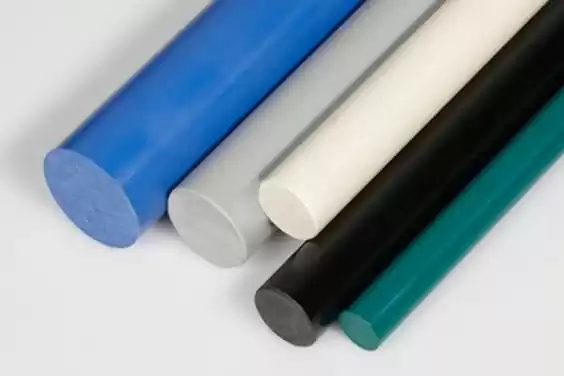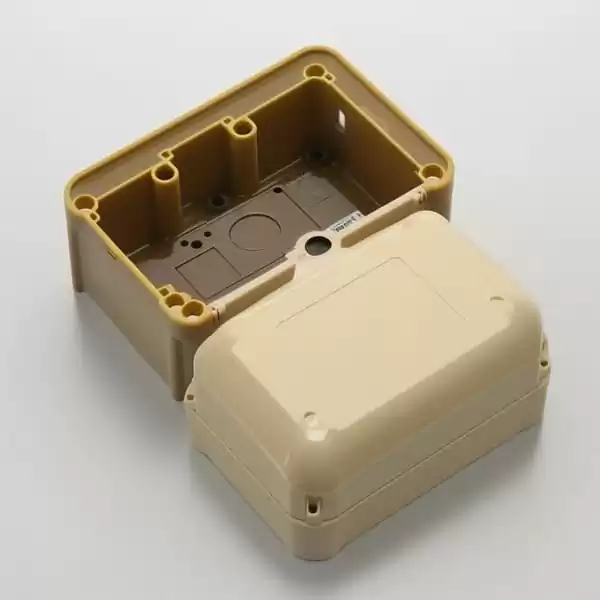Introduction:
Injection mold design plays a pivotal role in the plastic injection molding process, serving as the foundation for producing high-quality plastic components. The design of the mold determines the shape, precision, and functionality of the final product. A well-designed injection mold ensures efficient manufacturing, optimal part quality, and cost-effectiveness.
The significance of injection mold design cannot be overstated. It directly influences factors such as material flow, cooling efficiency, parting line placement, and gate location. Each of these design considerations impacts the overall performance and aesthetics of the injection molded parts.
By understanding the basics of injection mold design, manufacturers can optimize the production process, minimize defects, and enhance overall product quality. A meticulously designed mold facilitates smooth material flow, reduces injection molding cycle times, minimizes scrap, and enhances the dimensional accuracy of the final parts.
Additionally, injection mold design influences cost considerations. A well-designed mold reduces tooling costs, minimizes injection molding machine downtime, and enhances production efficiency. It enables manufacturers to achieve the desired part specifications while optimizing resources.
In the subsequent sections of this article, we will explore the fundamental aspects of injection mold design, including material flow, wall thickness, parting lines, cooling systems, gate locations, and the overall mold design process. Understanding these key factors will equip manufacturers with the knowledge necessary to create effective molds for successful plastic injection molding basics.

By emphasizing the significance of injection mold design, we aim to highlight its crucial role in achieving high-quality plastic components and efficient manufacturing processes.
II. What Are the Basics of Injection Mold Design?
A. Material Flow:
Proper material flow is a critical aspect of injection mold design as it directly affects the quality and integrity of the final molded parts. Achieving optimal material flow is essential for avoiding defects and ensuring consistent filling of the mold cavity. Factors such as gate location, runner system design, and mold temperature influence material flow.
Gate Location:
The gate is the entry point for the molten plastic into the mold cavity. The location of the gate plays a significant role in material flow and affects part quality, cosmetic appearance, and structural integrity. Proper gate placement facilitates uniform filling, minimizes flow marks, and reduces the likelihood of part defects. Different gate types, such as edge gates and hot tip gates, offer varying advantages depending on the specific requirements of the injection molding project.

Runner System Design:
The runner system consists of channels that guide the melted plastic from the injection point to the mold cavity. It ensures the proper flow and distribution of the material. The design of the runner system should consider factors such as balance, flow rate, and pressure drop to achieve uniform material flow and minimize waste.
Mold Temperature:
Maintaining appropriate mold temperature is crucial for controlling material flow. It affects the viscosity of the molten plastic and influences the filling behavior within the mold cavity. Proper mold temperature control helps prevent issues like warping, sink marks, and inconsistent part dimensions.

B. Wall Thickness:
Different plastic material and part geometries have specifically recommended nominal wall thickness ranges. These recommendations ensure proper material flow, structural stability, and ease of mold filling. Deviating from the recommended wall thickness can result in flow imbalances, insufficient packing, or excessive part shrinkage.
Recommended Wall Thickness:
Different plastic materials and part geometries have specific recommended wall thickness ranges. These recommendations ensure proper material flow, structural stability, and ease of mold filling. Deviating from the recommended wall thickness can result in flow imbalances, insufficient packing, or excessive part shrinkage.
Influence on Part Quality:
Uniform wall thickness promotes consistent cooling, reduces part warpage, and enhances dimensional accuracy. It helps to avoid defects like sink marks, voids, and inconsistent mechanical properties. Maintaining proper wall thickness is crucial for producing high-quality injection molded parts.

C. Parting Line:
The parting line is the meeting point of the two halves of the mold, where the mold splits to remove the finished part. Proper parting line design is crucial for achieving seamless part geometry and efficient ejection.
Role of the Parting Line:
The parting line determines the location of the potential parting line flash and witness marks on the finished part. Careful consideration should be given to its placement to ensure minimal impact on part aesthetics and functionality. The parting line should be strategically positioned to avoid critical features or areas of high cosmetic significance.
Effect on Part Cosmetics and Ejection:
The parting line should be designed to minimize any cosmetic defects or visible parting line flash. It should also facilitate easy and efficient ejection of the part from the mold. Proper parting line design helps ensure consistent part quality and efficient production.

D. Cooling System:
An efficient cooling system is vital for achieving high-quality parts and optimizing cycle times. It helps solidify the molten plastic, control part dimensions, and reduce cycle times.
Significance of an Efficient Cooling System:
The parting line should be designed to minimize any cosmetic defects or visible parting line flashes. It should also facilitate easy and efficient ejection of the part from the mold. Proper parting line design helps ensure consistent part quality and efficient production.
Placement of Cooling Channels:
Cooling channels are designed to provide optimal cooling and temperature control. They are strategically placed near areas of high heat accumulation or thick sections to ensure uniform cooling. The design of the cooling system should consider factors such as flow rate, channel diameter, and mold surface contact to achieve efficient heat extraction.

Importance of Consistent Cooling:
Uniform cooling prevents variations in part dimensions and minimizes internal stresses within the molded parts. It promotes dimensional accuracy, reduces warpage, and improves overall part quality.
E. Gate Location:
The location of the gate, where the molten plastic enters the mold cavity, significantly influences material flow, part quality, and structural integrity.
Impact on Material Flow:
The gate location determines how the molten plastic flows into the mold cavity. Proper gate placement ensures uniform filling, minimizes flow imbalances, and prevents defects like jetting, flow lines, or air traps. It also helps achieve consistent packing and optimal part density.
Part Quality and Structural Integrity:
Gate location affects the part’s mechanical properties, including strength, durability, and dimensional stability. A well-placed gate ensures uniform material distribution, reducing the likelihood of internal voids, weak spots, or part distortion. It enhances part quality and structural integrity.
Considerations for Gate Location:
The selection of the gate location depends on factors such as part design, material flow behavior, and part aesthetics. Different gate types, including edge gates and hot tip gates, offer advantages in terms of gate vestige, gate visibility, or ease of part removal. The gate location should be carefully chosen to achieve the desired part quality and performance.
By understanding and incorporating these basic principles of injection mold design, manufacturers can optimize the injection molding process, enhance part quality, and improve overall productivity. Each of these factors plays a crucial role in achieving successful plastic injection molding and delivering high-quality injection molded parts.

III. How to Design an Injection Molding Mold?
A. Product Analysis:
To design an effective injection molding mold, a thorough understanding of product requirements and material selection is crucial.
Explain the importance of analyzing product specifications, such as dimensions, functionality, and aesthetic requirements.
Discuss the significance of selecting the appropriate plastic resin based on factors like material properties, durability, and cost-effectiveness.

B. Mold Layout:
Creating a mold layout is a key step in mold design, ensuring efficient production and optimal part quality.
Discuss the process of determining the number of cavities based on production volume and cycle time requirements.
Explain the considerations for runner system design, such as balancing flow, minimizing pressure drop, and achieving uniform material distribution.
Discuss the placement of gates, considering factors like part geometry, material flow behavior, and gate visibility.
C. Mold Design:
Successful mold design involves various components and considerations to ensure high-quality molded parts.
Explain the key components of mold design, including the mold cavity, mold core, cooling channels, ejection system, and venting.
Discuss the importance of proper parting line location to minimize cosmetic defects and facilitate efficient part ejection.

Highlight the significance of maintaining uniform wall thickness for consistent part quality and proper material flow.
Explain the design of cooling channels to achieve efficient heat extraction and uniform cooling throughout the mold.
Discuss the ejection system, including ejector pins or plates, to ensure smooth part removal from the mold.
Explain the importance of venting to allow the escape of air and gases during the injection process.

D. Material Selection:
Choosing the right plastic resin is critical for achieving the desired properties and functionality of the injection molded part.
Highlight the importance of considering material properties such as strength, flexibility, temperature resistance, and chemical compatibility.
Discuss the impact of material selection on factors like part performance, durability, and cost-effectiveness.

E. Tooling Cost:
Considerations related to tooling cost have a significant influence on mold design decisions.
Discuss the importance of balancing tooling cost with desired part quality and production volume.
Explain factors that affect tooling costs, such as mold complexity, number of cavities, and required features.
Discuss the significance of optimizing tooling design for cost-effective manufacturing without compromising part quality.
By following a comprehensive design process that includes product analysis, mold layout, mold design, material selection, and tooling cost considerations, manufacturers can develop injection molding molds that meet the desired requirements efficiently and effectively. Proper mold design plays a crucial role in ensuring the production of high-quality plastic parts while optimizing resources and costs.
Conclusion:
Injection mold design plays a crucial role in achieving high-quality and cost-effective plastic injection molding. It is the foundation of the production process, directly impacting the final product’s quality, functionality, and overall manufacturing efficiency. By emphasizing key factors such as material flow, wall thickness, cooling system design, gate location, and tooling cost, manufacturers can optimize the mold design for successful injection molding.
Proper material flow is essential for consistent filling of the mold cavity, ensuring uniform part quality and minimizing defects. Factors like gate location, runner system design, and mold temperature influence material flow and should be carefully considered during mold design.
Maintaining uniform wall thickness is crucial for part integrity and dimensional stability. Adhering to recommended wall thickness guidelines ensures consistent part quality, minimizing issues like warping, sink marks, and uneven cooling.
An efficient cooling system is vital for achieving high-quality parts and optimizing cycle times. Proper placement of cooling channels and consistent cooling throughout the mold promote dimensional accuracy, reduce warpage, and improve part quality.
Gate location significantly influences material flow, part quality, and structural integrity. Careful consideration of gate placement based on factors like part design, material flow behavior, and part aesthetics helps achieve uniform filling, minimize defects, and enhance overall part performance.
Considerations related to tooling cost impact mold design decisions. Balancing tooling costs with desired part quality and production volume is crucial. Optimizing tooling design helps achieve cost-effective manufacturing without compromising part quality.
By incorporating these key factors into the injection mold design process, manufacturers can produce high-quality plastic parts while optimizing resources and costs. Attention to detail, adherence to recommended guidelines, and continuous improvement in mold design practices contribute to successful plastic injection molding and the delivery of superior products to customers.






